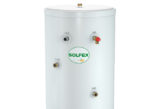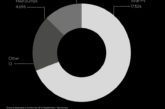
On 30th August, the Government surprised industry by publishing Statutory Instrument (SI) 2017 857 which makes clear select changes to the Renewable Heat Incentive (RHI) will come into force on 20th September 2017. Kensa Heat Pumps has its say and outlines what this means for the industry.
The most critical change is the introduction of ‘caps’ (Regulation 15) which will limit tariff payments for ground source heat pump (GSHP) installations with an annual heat demand exceeding 30,000kWh/year.
As a consequence, for installations at properties with an annual heat demand above this 30,000kWh threshold, there is a financial advantage if the RHI application is submitted to Ofgem before SI 857 comes into force.
Unfortunately, that leaves little time to conclude the installation and RHI application work.
To be clear, the introduction of heat demand caps was expected: it was clearly communicated in the Government’s December 2016 response to the RHI consultation and was included in the draft RHI regulations which were published in the spring. Industry just expected government to adopt a different approach to the implementation and provide more notice.
As background, all the proposed changes to the domestic RHI were included in a single Statutory Instrument that was published in the spring. At the time, government advised the SI would come into force after processing through parliament, a process that was estimated to take around six-eight weeks. Shortly afterwards, and without any explanation, the Government withdrew these regulations and industry has been awaiting a further update ever since. It came recently however, and without any warning1.
It is now clear the Government is taking a different approach and splitting the changes amongst two (or more) Statutory Instruments with the first having a swifter implementation period. This will impact some installations unexpectedly and we apologise for any issues. Government, no doubt, will argue that the implementation date is well beyond the original schedule so the market can have few complaints but that is rather missing the point. Government needs to communicate clearly so those engaged in the renewable heat sector can share accurate and up-to-date information with customers.
Anyway, nothing can now be done. The key point is the clock is now ticking and the schedule for the introduction of heat demand caps has been set. They come into force on September 20th.
The Statutory Instrument can be found here: www.legislation.gov.uk/uksi/2017/857/pdfs/uksi_20170857_en.pdf













